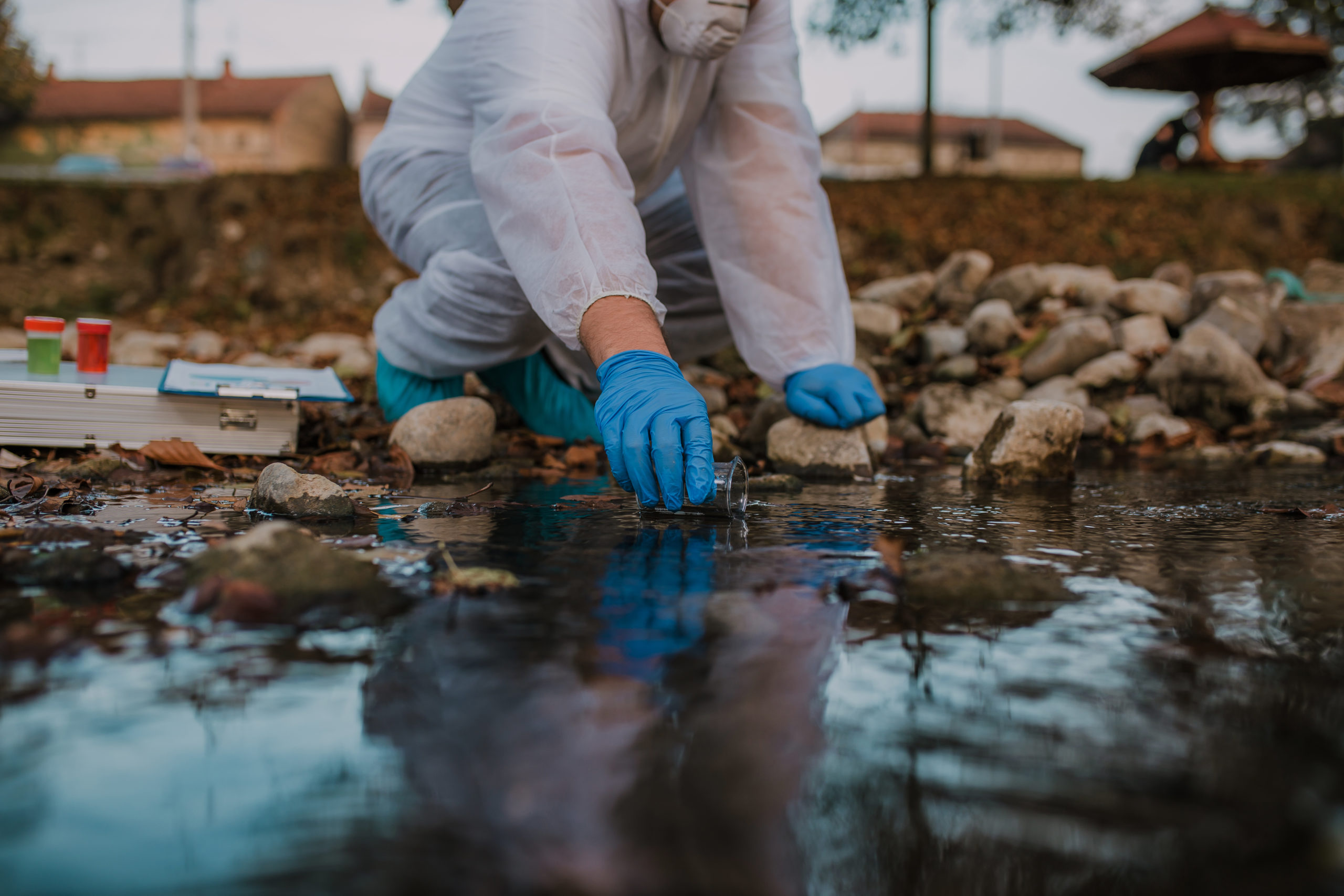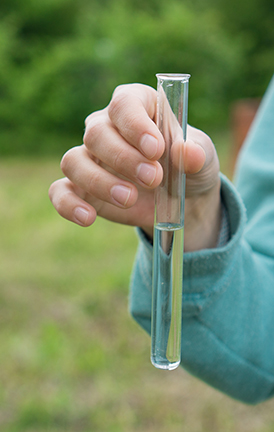Dependable Water Testing Services Near Me: Know What remains in Your Water
Dependable Water Testing Services Near Me: Know What remains in Your Water
Blog Article
Discover What Is Included in Water Checking and Exactly How It Guarantees Safe Drinking Water
Understanding the ins and outs of water screening is crucial in making certain the quality and security of our alcohol consumption water. Through a meticulous evaluation of physical, chemical, and microbiological elements, water testing recognizes prospective pollutants that might posture health risks. From the presence of heavy steels to dangerous bacteria, each examination part plays an important role in keeping the stability of our water supply. Advanced strategies like chromatography and spectrometry improve the precision of these analyses. Yet, how do these processes translate right into the regulative frameworks that assure security in our day-to-day intake?
Key Parts of Water Screening
Water screening is an important process that involves numerous crucial parts to ensure the security and quality of alcohol consumption water. Furthermore, making sure the pH balance of water is important, as it impacts the water's corrosiveness and the efficacy of sanitation procedures.
One more substantial element involves microbiological evaluation, where water samples are examined for the presence of microorganisms such as germs, viruses, and protozoa. This analysis is crucial to recognize biological threats that can posture wellness threats if eaten. Chemical evaluations are performed to spot natural and inorganic materials, such as heavy steels, nitrates, and pesticides, that may be present in the water supply.

Spotting Harmful Contaminants
Finding harmful impurities in drinking water is a basic facet of guarding public wellness. This procedure includes recognizing potential threats that can endanger the quality and safety of water materials. Contaminants can range from microbes such as germs, viruses, and protozoa, to inorganic substances like lead, arsenic, and nitrates, as well as natural contaminants including pesticides and commercial chemicals. Each kind of pollutant postures distinctive wellness risks, making their discovery critical to guarantee the water consumed by the public is risk-free.
Water testing for contaminants is usually carried out by regulative companies and water utilities, employing a mix of area tasting and lab evaluation. These assessments are made to spot both normally taking place materials and anthropogenic contaminants that might have gotten in the water with agricultural runoff, industrial discharge, or aging framework. Regular monitoring is important, as contamination levels can rise and fall due to environmental modifications, seasonal variations, or human activities.
The identification of hazardous impurities notifies necessary activities, such as water treatment interventions or public advisories, to mitigate threats. Early discovery is vital to stop damaging health results, varying from gastrointestinal illnesses to long-term conditions like cancer cells, therefore making certain the proceeded safety and security of drinking water.

Chemical Evaluation Methods
In the world of making sure secure alcohol consumption water, chemical evaluation methods play a crucial role in determining and measuring impurities. These approaches are vital for spotting a vast array of chemical substances, including heavy metals, chemicals, and industrial contaminants, which can present considerable wellness threats. Methods such as atomic absorption spectroscopy (AAS) and inductively coupled plasma mass spectrometry (ICP-MS) are typically used to gauge trace degrees of metals like arsenic, lead, and mercury. These tools give precise quantification, assisting in conformity with regulatory criteria.
Gas chromatography-mass spectrometry (GC-MS) is one more essential strategy, specifically for natural substances. It separates intricate mixtures and recognizes volatile and semi-volatile organic substances, making sure that toxins like benzene and toluene are within risk-free limits. High-performance fluid chromatography (HPLC) is in a similar way made use of for non-volatile materials, including particular pesticides and pharmaceuticals.
Ion chromatography is used to identify focus of anions and cations, such as nitrates and sulfates, which are essential in evaluating water quality. These chemical analysis methods collectively ensure that alcohol consumption water remains risk-free by detecting variances from established pureness standards, therefore safeguarding public health and wellness. Ensuring precision and precision in these tests is extremely important to preserving the integrity of water safety assessments.
Microbiological Testing Approaches
Accurate microbiological testing is vital for protecting public health and wellness by guaranteeing that drinking water is free from harmful pathogens. This procedure entails detecting and enumerating microbes such as germs, infections, and protozoa that might contaminate water supplies. Usual pathogens consist of Escherichia coli, Giardia, and Cryptosporidium, each posturing considerable health and wellness risks.
Several approaches are employed in microbiological screening to determine these threats. The membrane purification strategy is regularly used, entailing water going through a filter that captures germs, which are then cultured to establish their presence and concentration. Additionally, the multiple-tube fermentation method enables the metrology of coliform their explanation bacteria making use of a series of dilution and incubation actions.
Improvements in modern technology have actually introduced molecular methods such as polymerase chain reaction (PCR), which allows for the quick and highly specific detection of pathogens by intensifying their genetic product. Enzyme-linked immunosorbent assays (ELISA) likewise provide a method to identify virus by recognizing particular healthy proteins or antigens.
These differed methods are important for detailed water quality analysis, ensuring that water treatment processes are reliable which circulation systems keep safety and security. By utilizing these microbiological screening approaches, potential health and wellness threats can be recognized and mitigated immediately.

Value for Public Health And Wellness
Making sure the microbiological safety of drinking water directly affects public health by avoiding the spread of waterborne conditions. Pathogens such as bacteria, viruses, and protozoa can bring about ailments like cholera, dysentery, and stomach infections (Water Testing Service). The application of thorough water screening procedures is paramount in recognizing and mitigating these risks, thus safeguarding neighborhoods from possible outbreaks
Normal water testing not just finds microbial impurities yet likewise assesses chemical and physical specifications that can impact wellness. For example, extreme degrees of nitrates or hefty metals such as lead can present significant health dangers, especially to at risk populaces like infants and expecting ladies. By determining these threats early, water testing enables timely interventions, ensuring the water stays within risk-free consumption standards.
Additionally, water screening plays a critical role in preserving public self-confidence in municipal water systems. It offers openness and liability, guaranteeing the public my link that their health is a top priority. For policy manufacturers and health and wellness officials, the information stemmed from water screening informs decisions on framework investments and public health approaches, ensuring resources are directed where they are most required. By doing this, water testing is essential in promoting a healthier, safer culture.
Final Thought
Water screening works as a necessary mechanism for making certain the security and quality of drinking water via comprehensive examination of its physical, chemical, and microbiological residential or commercial properties. By discovering harmful contaminants, such as heavy steels and chemicals, and making use of innovative techniques like chromatography and spectrometry, water testing helps with the identification of possible health and wellness risks. The application check of strenuous testing protocols is essential for maintaining compliance with safety criteria, eventually safeguarding public wellness and reinforcing confidence in local water supply.

By determining these dangers early, water testing allows prompt interventions, making certain the water supply stays within safe intake standards.
Water testing offers as an essential mechanism for making sure the security and quality of drinking water through extensive evaluation of its physical, chemical, and microbiological residential or commercial properties.
Report this page